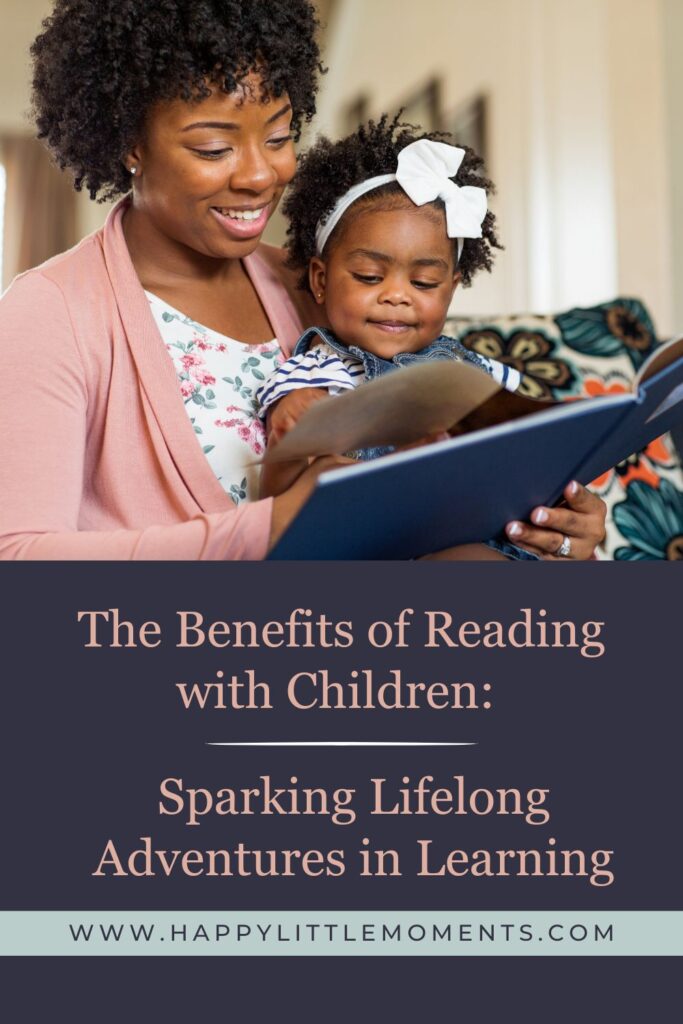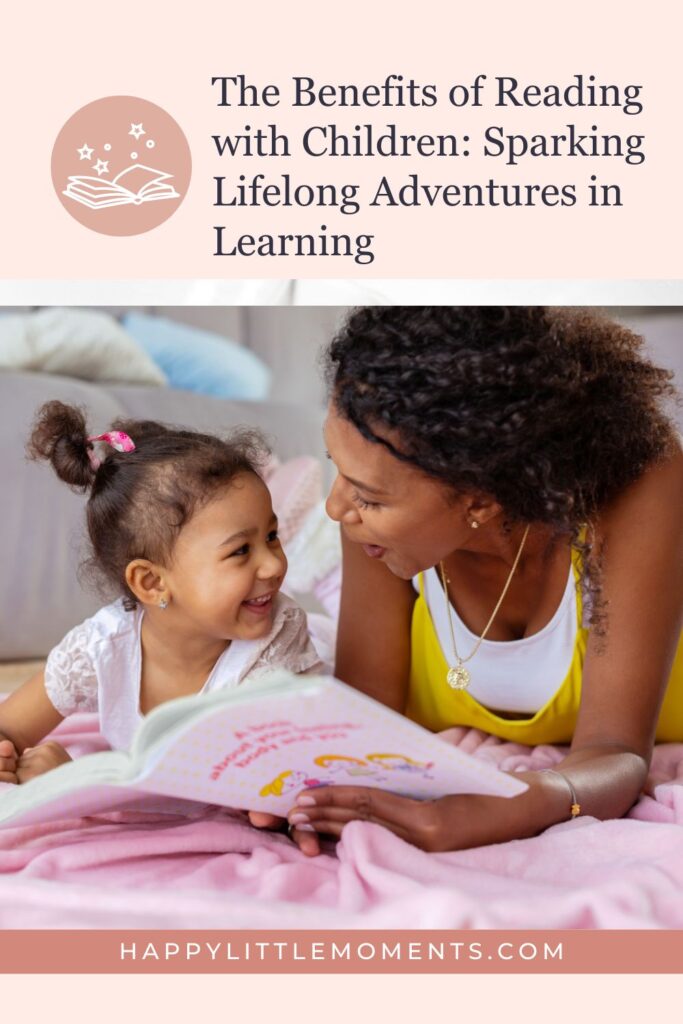The Benefits of Reading with Children: Sparking Lifelong Adventures in Learning
The benefits of reading with your child extend far beyond the simple joy of sharing a story together. Extensive research shows that reading to your child from infancy and toddlerhood is a powerful investment in their future. Even babies, with their amazing ability to absorb information, benefit from early exposure to reading. It not only enhances their language development, but also lays the foundation for a lifetime of learning, setting them up for success in school and beyond.
THE BENEFITS OF READING WITH CHILDREN: STRENGTHENING YOUR BOND WITH YOUR CHILD
If you’ve read my previous articles, you know that I advocate for the Power of Connecting with your Child. One of my favorite ways to do that is through reading. I still remember my son, at the age of 3, saying, “Let’s get cozy!” It’s a phrase that has become a part of our evening storytime routine.
Making storytime a priority for you and your child to slow down and connect speaks volumes to your child. You will often have that bond of holding them on your lap and looking at pictures. Reading books also sparks age-appropriate conversations about the world, animals, and emotions. It can help a child feel safe because they are in your arms or near you. Bedtime reading has been a favorite tradition in our family since the day we brought our daughter home from the hospital, and we’re almost 7 years strong on this habit. Now, my 6-year-old daughter (almost 7-year-old!) often reads to her little brothers.

Brain Development
The benefits of reading with your child are immense regarding brain and cognitive development. Even babies that are read to regularly “show higher language skills and cognitive development, like problem solving.” According to PubMed, children who are read to regularly will likely be exposed to 1.4 million more words than a child who is not read to regularly. Shockingly, 25% of caregivers admit that they don’t read to their children. This breaks my heart!
In conversations I’ve had with parents, many parents feel they have failed at reading with their child because their toddler or preschooler won’t sit still through a book. I’m here to tell you that it is completely normal for a toddler to not sit still during storytime. Some small children will sit through a book, and others need to play and explore while they listen. It’s okay if your toddler decides to go play with their kitchen set while you read. Young children absorb a shocking amount of knowledge, even when they appear not to be listening. The benefits of reading to your child are still happening even if they are not fully engaged with you.
Vocabulary and Language Development
In recent research, it has now been proven that infants are learning words much earlier than we ever thought. Months before babies say words, their brains gain the skills and language development for speech. And infants’ understanding of the world around them is largely dependent upon gaining vocabulary.
Young children who are read to and spoken to often will also have much larger vocabularies, will be able to express themselves more coherently (yay for fewer tantrums!), and will be more prepared for learning to read. All of this combined prepares them for other school subjects as well, which leads to overall better self-esteem during school-age childhood.
Developing Listening skills
Children who are read to consistently develop better listening skills. Over time, children in literacy rich homes develop the increasingly important skill of listening. This skills leads to better overall comprehension, the ability to follow instructions, and an ability to learn any other subject matter that is taught in school down the road. Additionally, learning better listening skills is a precursor to learning critical thinking skills. Children with good listening skills are better equipped to process information, analyze, evaluate, and make connections between ideas, which is essential for problem-solving and decision-making.
Lastly, learning listening skills from an early age helps with learning concentration and self-control. As children learn to practice attentive listening, they develop patience, impulse control, and the ability to focus for longer periods of time. All of these skills are essential for overall academic success, and are just some of the benefits of reading with your child.
Social and Emotional Skills
Reading with your child also fosters crucial social and emotional skills. As you dive into stories together, your child begins to empathize with the characters, opening avenues for discussions about real-life challenges and how to navigate them. This process helps them recognize their own feelings they see mirrored in those of the characters.
Among our favorite social and emotional books are ‘Red, Red, Red, The Color Monster, and ‘Uh-oh, Calico! These books resonate with young readers because the characters grapple with emotions they can relate to.

Ways to Get the Most Benefits from Reading with Your Child:
- As part of your nightly routine, start reading before bedtime. For more information on the benefits of reading before bed, check out: The Bedtime Story Advantage: Why Reading to Your Child Matters. Bedtime is a great way to wind down together as a family, “get cozy”, and read together. If possible, sprinkle other times to read with your child throughout the day or in the evening if you are a working parent.
- Take your reading time as an opportunity to be fun and silly with your child. Everyone has more fun when you, as the reader, get into the characters. Use lots of voice modulations and goofy voices for different characters.
- While it’s great to read new books frequently with your children, reading the same books over and over is excellent, too! Children learn by repetition and seeing the same words being associated with the same pictures on the page is extremely helpful to them on their pre-literacy journey.
Dialogic reading
- Use stories as starters for conversations with your child. For example, a story about a bunny can prompt a conversation about the bunny your child saw in your yard earlier. Ask open-ended questions about the bunny, such as, “What do you think the bunny was doing?” “What was the bunny looking for?” “Where do you think it was going?” Any of these questions could lead to a conversation about your garden or where bunnies live, or any number of other topics. This is called dialogic reading, and it helps children build more vocabulary, relate to the story, and become more articulate about their thoughts.
- Try using the stories’ pictures as a springboard to tell your own stories. You and your child can use your imaginations to create your own world of characters and stories. Be silly, be goofy, and most of all, make it fun.
I hope this sheds light on the benefits of reading with your child. If storytime isn’t a regular practice in your home yet, don’t worry – there’s no time like the present to begin. If you find this information valuable, please be sure to share this post with your friends!
Save this post for later! Click here to save to your Pinterest account.



